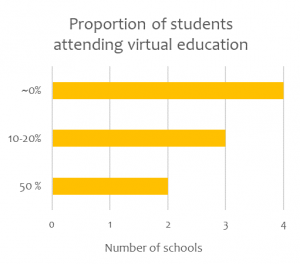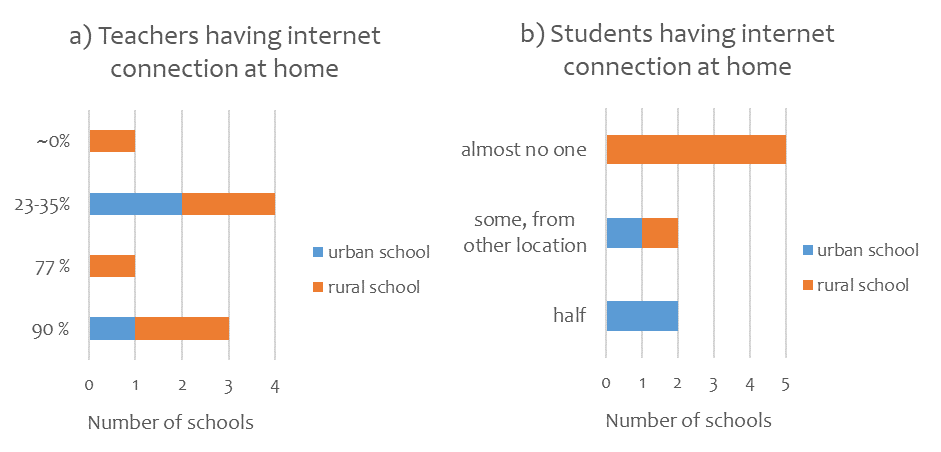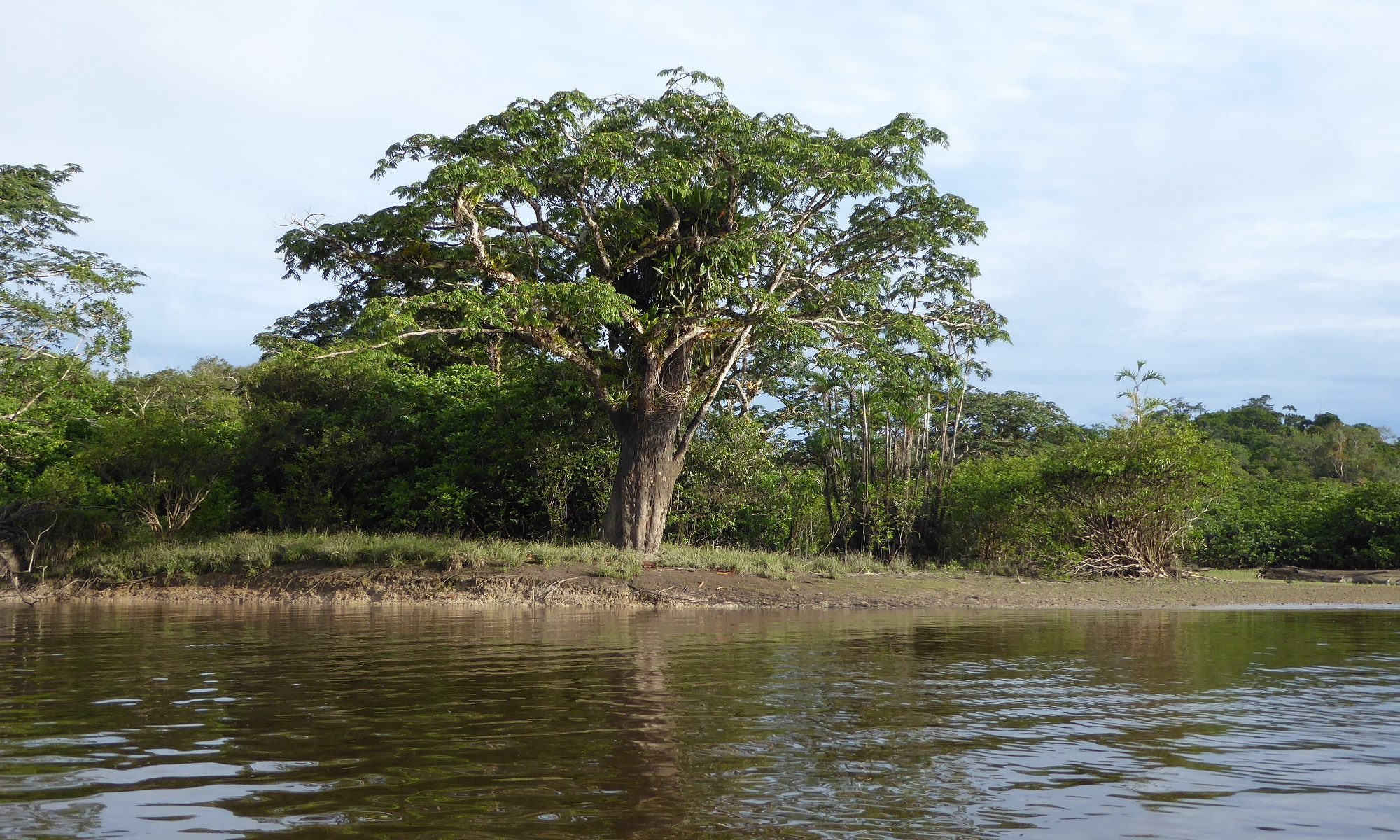Text by Johanna Hohenthal, Katy Machoa and Tuija Veintie
[Haz clic aquí para version en español]
In March 2020, due to the health crisis caused by COVID-19, classes were suspended in all educational units in Ecuador. In general, a prolonged suspension of classes has long-term consequences, particularly for marginalized and low-income groups (Giannini 2020). Therefore, we considered important to monitor the situation in intercultural bilingual schools during the pandemic. Due to the conditions of physical distancing, the research team has been unable to visit schools in the Amazonian region. Instead, we conducted telephone interviews with the principals of the educational units between 11 May and 3 June. We managed to contact 9 of the 14 schools in the Pastaza province that we had visited earlier during the research project. These schools represent approximately half of the intercultural bilingual schools that have a high school level program in Pastaza (AMIE, school year 2018-2019).

The interviews revealed several difficulties in implementing intercultural bilingual education in the Amazonian region during the health emergency. Most school principals and teachers try to work from home but many of them lack the computer and internet connection that are necessary for teleworking and organizing virtual teaching. Similarly, most students do not have the possibility to attend virtual education (Figure 1). However, the third year high school students have somewhat better access to the internet than the other students. One of the principals estimates that in their educational unit up to 70% of the third year high school students participate in virtual education to a certain degree. This is a positive thing, because it is important for the third year students to finish their studies to proceed to higher education or working life. However, for the vast majority of high school students the only option to continue their studies is to use the printed learning guides.
The place of residence has a direct impact on digital connectivity. The principals who live in the town of Puyo told that they participate in video conferences and communicate frequently, for example, with the Ministry of Education. Many teachers of the rural schools also live in town. However, principals, teachers and students living in remote communities with low (or no) internet connections have fewer opportunities for virtual communication (Figure 2).

In all schools, according to the principals, the majority of the students study using the materials produced by their teachers. These materials include assignments that the teachers prepared at the beginning of the suspension period of classes, as well as more extensive learning guides designed for students to develop self-learning activities for 4-6 weeks. In the schools, there is not a wide distribution of self-learning guides produced by the Secretariat of the Intercultural Bilingual Education System (SESEIB). Almost all principals believe that the majority of students are dedicated to learning with their family members. They consider that learning with parents is important. However, due to poor telephone and internet network in several areas, it is difficult or impossible to follow up the activities that students carry out, how they take advantage of the possibility of learning with their family members and how they progress with their studies. Most principals are concerned that the sudden change from the face-to-face teaching to studying without a teacher affects the school performance of the students in a negative way. Furthermore, most principals are concerned about the stress and emotional charge that the students are experiencing.
The proportion of inactive students in schools varies according to the possibilities of the teachers to produce, print and distribute the learning guides. In several schools, there have been periods of 15 days without teaching activities. Also in one of the schools, the interruption of activities for the majority of students lasted months due to lack of material and resources to print the learning guides. In addition, sometimes, there has been a challenge to locate the students in order to deliver the guides to them. Due to the fear of contagion, some students have gone with their families to remote farms, where the risk of contagion is low, but at the same time, they have fewer opportunities to communicate with teachers and receive educational materials. However, principals of the several schools affirm that only a minor proportion of the students has not been in contact with the school after the suspension of classes. The exact numbers are unknown, but according to the approximate calculations of the principals, those with whom the school has lost contact are “some”, 10-20% or up to 30-40% of the students at the high school level.
According to the principals, the community organization and parents express a lot of interest in the education during the pandemic and support with what they can. On the other hand, most of the principals indicate that the support received from the Ministry of Education, SESEIB, parish, cantonal or provincial authorities, has been little or non-existent. For example, in several schools, the principals and teachers cover the expenses of photocopying the educational materials for the students by themselves.
The economic factors cause inequality between students in different schools because only some of the schools have materials and resources to print and distribute the learning guides for students. Apart from printing and distribution costs, it is essential to ensure access to personal protective equipment to avoid the risk of contagion.
To conclude, the results of this small study indicate that virtual education does not function in the Amazonian region because there is no access to computers and internet. In this context, geographical distances become exclusive. The students who live far away from urban centers are less likely to proceed in their studies and have a high risk of dropping out. To reduce educational inequality, it would be extremely important to increase coverage and internet connectivity in rural areas, and to secure mechanisms to produce, print, and distribute learning guides to all students who need them. At the same time, it would be essential to plan leveling phases at all levels of the educational system, with particular emphasis on students living in rural areas with little or no access to virtual education and the media.
Sources:
Archivo Maestro de Instituciones Educativas. <https://ecuadorec.com/amie-archivo-maestro-instituciones-educativas-ingresar/> [Accedido el 21 de marzo, 2020]
Giannini, S. (2020). Three ways to plan for equity during the coronavirus school closures. World education blog. URL: https://gemreportunesco.wordpress.com/2020/03/25/three-ways-to-plan-for-equity-during-the-coronavirus-school-closures/ [Publicado el 25 de marzo, 2020]
